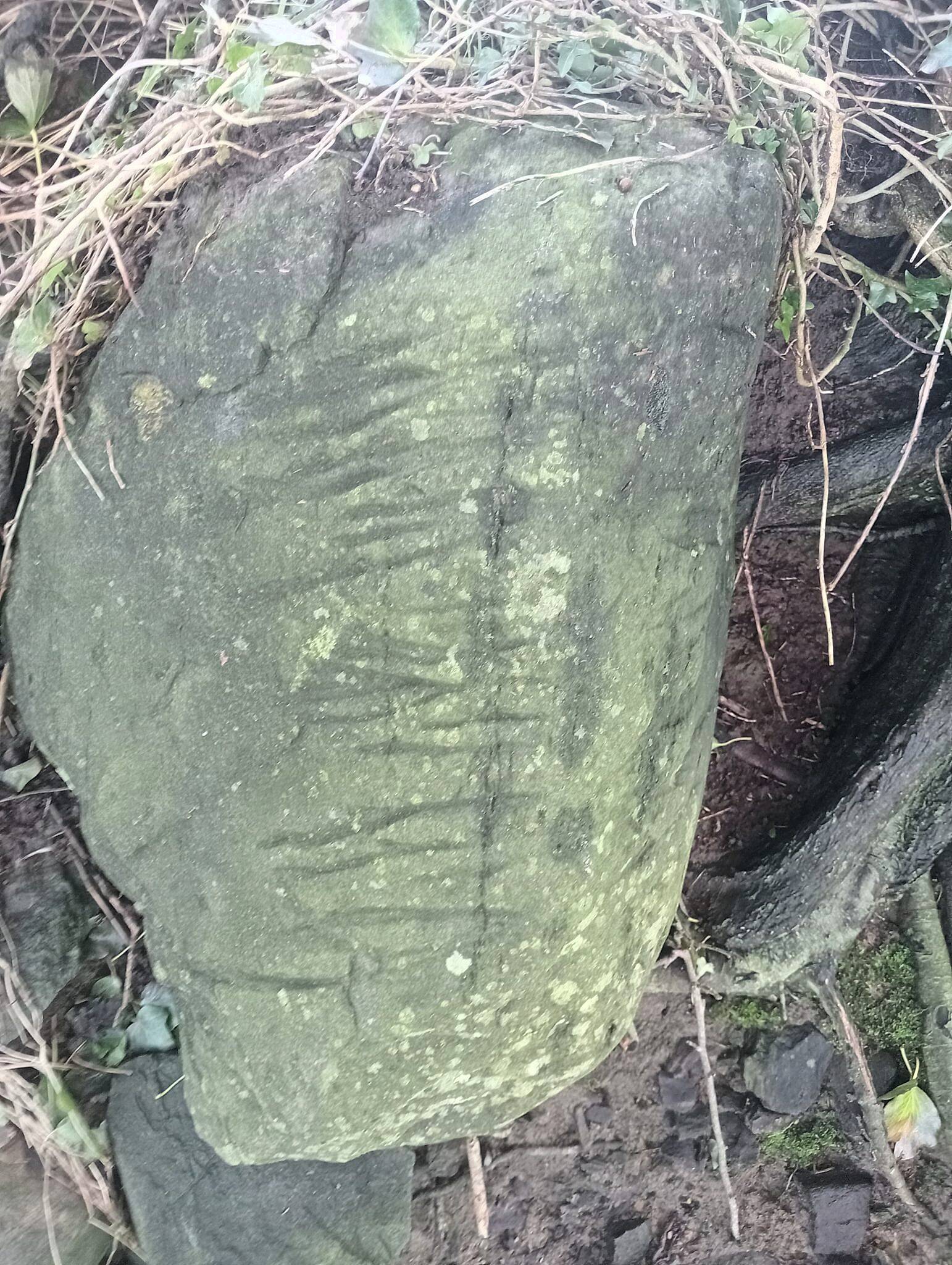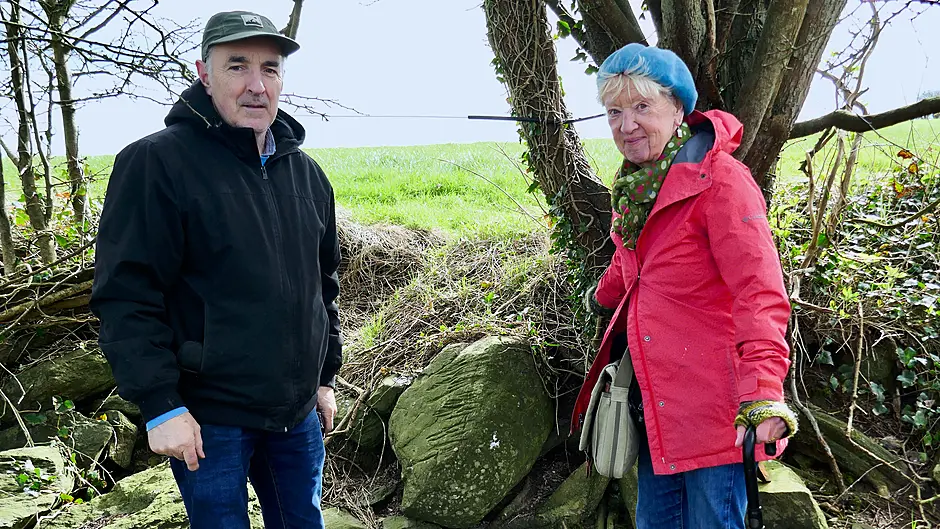THE discovery of a stone with mysterious markings led to a sleuthing expedition by local historian and archaeologist Finola Finlay.
Willie O’Regan got in touch with The Southern Star after finding a green-coloured rock in a ditch along the water’s edge on Inchydoney Island, and that spurred the quest.
Mr O’Regan explained that the area around the rock had been washed away by the tides and he wondered if the rock, partly hidden by an overhanging bush, could be an ancient Ogham stone?
The stone had unidentified markings and he wondered if maybe, just maybe, it was part of the ancient Irish alphabet.
 The markings on the stone had all the appearance of Ogham markings.
The markings on the stone had all the appearance of Ogham markings.
Finola, author of the Roarinwater Journal was this paper’s first port of call and she, together with friends Peter and Amanda Clarke, who is a Holy Well expert, happily planned an outing to Inchydoney.
Amanda rendezvoused with Willie on the north side of Inchydoney, and on their walk along the shoreline he told them about the history of the area.
‘We could see across the pond known locally as the Beamish Lake to the Hungerford House, originally called Inchydoney House,’ said Finola.
‘It has been purchased and magnificently restored in recent years, the owners pouring resources and loving attention into their project, including restoring the walled garden.
 The stone that looked like an Ogham stone was found on the shoreline at Inchydoney.
The stone that looked like an Ogham stone was found on the shoreline at Inchydoney.
Finola observed that ‘the shoreline had been (ahem!) shored up by rocks and rubble all along its length’ and may originally have been walled, as designed landscapes were very popular in the 18th century.
When Willie showed them the stone he had found, Finola could see that it had fallen forward out of the bank after recent high tides, revealing parallel grooves along its length: just the sort of thing you might expect from an Ogham stone.
‘We examined it thoroughly and took lots of photos,’ she said.
‘But it wasn’t an Ogham stone, although anyone could be forgiven for mistaking it for one!’ It turns out that the grooves are actually plough marks. As the plough passes over and through the soil, Finola explained, it runs across stones that are just at the right depth below the surface, gouging out these grooves.
Over the years, many grooves appear. Sometimes the stones, if they are small enough, roll over and the grooves appear on other surfaces, as seems to be the case with this stone.
Plough-marked stones like this could be any age, and this one could be medieval or more recent, she said.
It was probably finally unearthed and tossed to the edge of the field to join the other rocks, keeping the water from eroding the shorelines, eventually falling forward and revealing itself to Willie’s keenly observing eyes.
Finola said the story of this particular stone is one of cultivation and hard work – a story of never throwing anything away, and a story of a man who walks these shores for pure pleasure and never misses a trick.











